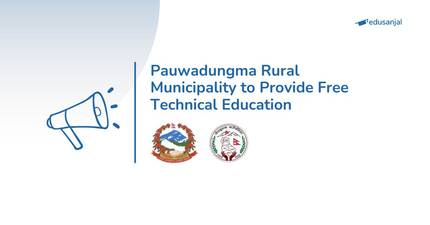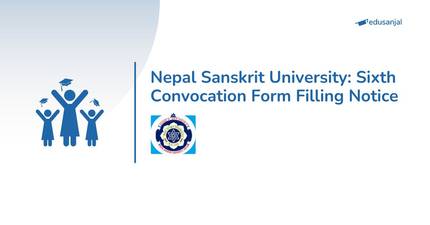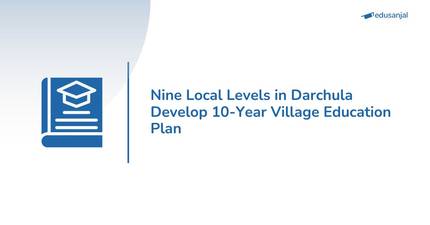GUIDELINES AND FORMAT FOR A RESEARCH PROPOSAL
RECTOR'S OFFICE, RESEARCH DIVISION
TRIBHUVAN UNIVERSITY
KIRTIPUR, KATHMANDU. NEPAL.
Format for Research Proposal:
The Research Division, T.U., considers it essential that research proposals submitted for acceptance and financial grants confirm to a prescribed format. The main aim in requiring an acceptable format for writing a research proposal is to have all the important features to appear in appropriately acceptable details. When a proposal falls short of presenting the significant aspects, it tends to hinder factual understanding and the real worth and relevance of the proposed work. Clear statements of the intended objectives of the study, the procedural approaches to be adopted, time schedules for the work and the estimate of expanses would greatly help in the preparation, proper evaluation, and the final approval of the proposal. During the process of evaluation it is also possible that some meaningful changes can be brought about to the proposal so as to render it more effectively.
Furthermore, processing of the proposal and the eventual conduct of the study would also gain convenience if the submitted proposal is comprehensive and self contained.
It may often be difficult to write down all kinds of research proposals strictly within the descriptions and categories fixed by a prescribed format. To an extent the format as developed below indicates the significant aspects which may not be missed out in any proposal. We hope that it will provide broad guidelines for drawing up a research proposal. It does not, however, limit the size and content of any proposal if the researcher feels that other relevant details also need to be added on.
The project proposal in its final form is expected to contain all pertinent details concerning the study, right from the initial stages to the stage of completion. It should, therefore, aim to be what may be described as the complete plan of action. To ensure a smooth course of development of the work it becomes necessary to project oneself into various phases of its growth and be able to possibly locate and take care of the constrains and other difficulties which may creep in the process of study. The idea of having to put in all details, before one knows whether the proposal may be at all accepted, may not be that relishing. For that matter, a proposal in a preliminary form may be submitted and may later on be developed into its full form.
Even in a preliminary form it is always advisable to put in essential details just to eliminate the possibility of a gap in understanding which otherwise keep on workable idea away from fruition.
Apart from the above stated factors, it is also desired that an objective basis should be available for the evaluation of the research work. The Research Division has been entrusted with this job. Successful execution of a research project gives certain benefits and credits to the researcher. It is important that the researcher gets a fair evaluation on the basis of the work and receives the credit s/he rightly deserves. To this end, it is essential that the proposal should contain a full description of all the facets of the work.
Here are the items that need to be essentially included in the writing of a research proposal.
Title of the Study:
A brief but clearly stated title of the proposed study is intended . The title should appropriately reflect the nature and scope of the proposed study.
Introduction of the Study:
The study problem should be identified by clearly stating its background, setting or environment, and the need for the study. Then, its importance should be clarified with reference to its practical
application to policy decisions or to the illumination of concepts and theories of development.
Statement of the Problem:
"A question well stated is a question half answered". The problem of the research question is, therefore, an interrogative statement in terms of the relation that exits between a set of variables. It should be stated clearly and unambiguously so as to permit empirical testing. Above all the problem should not be stated too generally or too narrowly. Most important, where the problem lies ( the problem that guides the study ) should be clearly stipulated in terms of the background and development within the scope of the proposed question (historical perspective is necessary).
Review of Literature:
One undertakes this in order to find out what works have already been done in the areas of the research problem under study. It also helps minimize the risk of dead ends, choice of rejected methods etc, promotes greater understanding of the problem under study, provides comparative data to evaluate and interpret the significance of findings, and to enforce fruitful sources of hypothesis. This section is vitally necessary. All references consulted must be cited.
Objectives of the Study:
Within the felt needs of the study, the specific objectives for undertaking the project should be spelled -out clearly. They should be identified in terms of the variables and parameters under study precisely and be formulated in the manner of questions. Where general objectives are felt desirable, specific sub-objectives must be framed within each general objective in a logical sequence.
Location of the Study: (Optional)
The place or places in which the study will be conducted need to be indicated.
Hypotheses:
A hypotheses is a conjectural statement of relations (based on the statement of the problem and the objective of the study) between two or more variables in either negative or positive terms. It should be neither too general nor too specific. However, it should specify how the variables are related. The hypotheses, thus could be formulated as null hypothesis, against alternatives.
Methodology:
It should correspond to the order in which each of the objectives listed are to be attacked in terms of essential hypothesis to be used: how and what data are to be generated and processed from ? What methods of analysis should be used ? what assumptions are being put to effect of the inquiry ?
(a) Methods of Data Collection:
Basic design of the experimental study should be explained. It has to stated whether the data is to be collected from other sources or the primary collection. The use of secondary sources, mail questionnaires, personal interview or field works which are relevant to the nature of the study are to be made where possible.
(b)Sampling Techniques:
Mention should be made of the estimated total size of population in the study and the method of sampling should be used in the proposal. It is necessary that an adequately reliable sampling frames and the basic criteria of selecting them be adopted. The main thrust of the study often centers around the nature of the questionnaire, selection of respondents as well as the modalities of operation of the study.
Mention should be made of the estimated total size of population in the study and the method of sampling should be used in the proposal. It is necessary that an adequately reliable sampling frames and the basic criteria of selecting them be adopted. The main thrust of the study often centers around the nature of the questionnaire, selection of respondents as well as the modalities of operation of the study.
(c) Analysis of data:
Statistical procedures and tests are adopted to ensure relevance of the conclusions of the proposed study. As such, the methods to be adopted indicating the level of analysis, and testing need should be clearly indicated.
Statistical procedures and tests are adopted to ensure relevance of the conclusions of the proposed study. As such, the methods to be adopted indicating the level of analysis, and testing need should be clearly indicated.
Limitation of the Study: Clearly specify the limits and constraints prevailing within each methods. In the event where two or more methods are used an explanation as to which method it to be preferred should be stated in terms of the assumptions and biases involved in each of the methods indicated.
Manpower Planning: (Optional)
A detailed workout of manpower need should be stated in terms of the job description, desired qualification of the personnel and their experience. Indication of the statement of functions, duties and responsibilities should be clearly indicated. Time for which manpower is need should be worked-out in man days for different phases of the project. If it is a team project, the project leader should be mentioned.
Scheduling of Time:
Different phases of the research project should be clearly stated in working weeks or months, preferably in a diagrammatic presentation (CPM, PERT or BARGRAM). Thus, it should be able to provide monitoring authorities with close estimates of the entire project time. It should mention the probable time schedule between inception and conclusion of the project in accordance with the T.U. Evaluation Format.
Chapter Plan : (indicative)
Chapter Plan should indicate the total number of chapters and pages, individual chapter titles, including sub heading and pages for each chapter. This helps both project planning and logistical support activities of the Research Division.
Budgeting/Estimate of Expenses:
A detailed and itemized budget showing how the funds are to be spent is essential. Presentation of budget for the proposed work may be made under the following main categories. Other headings of the category may, however be added if considered necessary for the sake of clarity. If any budgetary support is expected from other supplementary agencies, the amounts and conditions should be explicitly indicated.
It may be noted that all expenses met, out of the funds made available by Tribhuvan University, have to be budgeted strictly according to existing T.U. financial rules and regulations. These include payments as salaries and allowances according to levels of expertise, travel allowances and purchase of equipment.
It is important to mention that the Research Division or any other authority which funds the research project reserves the right to increase, deduct or reject the amount of the budget as shown on the proposal given the quality and relevance of the research proposal as well as the availability of research funds with it.
Fund grants, if available, are made through the concerned Campus Office from which the researcher draws the required amounts and submits the details of expenses. Fund grants are made available in phases, which presently stand at 60 percent, 20 percent and 20 percent.
The initial 60 percent is made available at the start of the project and subsequent 20 percent each is released on completion of two different stages of the work.
It is, therefore, important to coordinate budgetary items according to definitive stages of proposed work. If the researcher strongly feels that budgetary requirements have to be particularly different, it would be helpful to present the case and give reasons for it.
(a)Stationery and Office Supplies:
Items such as paper, postage, typing charges and other sundry supplies are to be met under this budget heading.
(b) Travelling Expenses :
Transportation costs and daily allowances while travelling are to be included under this budget heading. The number and mode of travel and places to be visited should be shown. Ordinarily, only travel costs for places within the country can be mentioned. If travel outside the country needs to be included full justification for these has to be given.
Bibliography and Annex :
The list of the literature reviewed and the sources from which items are quoted should be serially organized at the end of the proposal. All the data charts etc. that are being use for the presentation of the proposal will have to be included systematically with due emphasis un source citation.
Other Information :
Any other information which would help gaining realistic understanding of the proposal and facilitating the actual conduct of the work may be included if it is so desired. The researcher may also like to indicate the limitations of the proposed study and prospective approaches for further extension of its scope.
Reporting:
In course of the work the researcher is required to submit progress reports to the Research Division and to the Dean of the concerned Institute. The Research Division also holds exclusive rights to the publication of the results of the research report regularly.
Resume:
A recent and brief resume in English is required from each and every researcher. It should not be more than two double spaced pages. If there are more than one researchers for a research project, separate resume from each of them is required to be submitted together with the research proposal.












